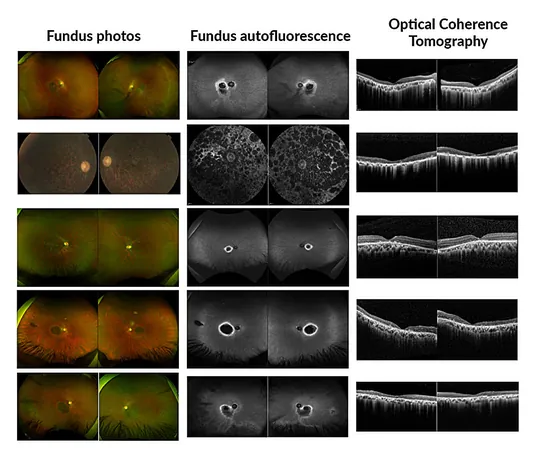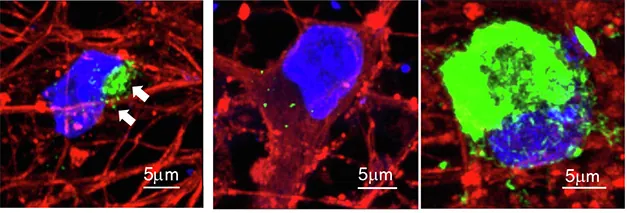
Scientists Make Breakthrough in 'Seeing' Through Mice – Is Human Transparency Next?
2024-09-28
Breakthrough in Biological Imaging
Imagine the mind-bending ability to peer through your own skin to watch your muscles and organs at work. This may sound like a plot from a sci-fi movie, but researchers at Stanford University have recently achieved a remarkable feat: making the skin of live mice appear transparent, at least under specific lighting conditions.
This revolutionary advancement stands to transform biological research and medical imaging as we know it. But how did these scientists accomplish this, and could we one day extend this phenomenon to humans?
Understanding the Complexities of Biological Tissues
Typically, when we observe objects, light reflects off their surfaces, allowing us to perceive their shapes and colors. However, living tissues like skin behave differently due to their composition of water, proteins, and lipids (fats), which scatter light in unpredictable ways. As a result, our ability to see deep within the body without invasive procedures has always been limited.
Scientists have been developing advanced imaging techniques, such as two-photon microscopy and near-infrared fluorescence, for years. However, many of these methods rely on harmful chemicals or are applicable only to non-living tissues. The Stanford team sought a way to safely and reversibly create transparency in living organisms, leading them to a surprising ingredient: food dye.
The Role of Tartrazine in Achieving Transparency
The researchers utilized tartrazine, a common yellow dye found in snacks and beverages. When mixed with water and applied to skin tissues, this dye alters how light interacts with biological matter. The physics behind this involves the “Kramers-Kronig relations,” which explain how materials interact with light at different wavelengths. Although tartrazine has long been used in microscopy to enhance visualization of specific anatomical parts, this experiment marks the first time it has been applied to the entire tissue of living animals.
When tartrazine was introduced into the skin of anesthetized mice, it modified the refractive index of their tissue, aligning it closer to that of lipids. This optimization allowed light to pass through the skin much more easily, giving the mice a startling transparency.
Observations and Implications of the Study
The implications of this study are staggering. Researchers were able to observe intricate structures such as blood vessels and muscle fibers with unprecedented clarity. In a stunning demonstration, they even witnessed real-time movements of the intestines through a transparent abdominal wall. Remarkably, this process did not appear to harm the mice, who reverted back to their normal opaque state once the dye was washed off.
Limitations and Future Outlook
While the prospect of monitoring organ functions non-invasively is enticing, it's crucial to clarify that the transparency achieved in this study does not result in complete invisibility. The effect is restricted to certain wavelengths of light, predominantly in the red and infrared spectrum, meaning the mice are not invisible to the naked eye in ordinary lighting conditions. Advanced imaging equipment is necessary to witness this phenomenon.
Furthermore, the transparency only affects areas where the dye was applied, and its efficacy is limited by how deeply it can penetrate. Due to the complexities and thickness of human skin, scaling this technology for human applications poses significant challenges, both in terms of uniform dye distribution and potential harm.
Larger volumes of tissue alter how light behaves, complicating the journey toward achieving full-body transparency. Moreover, bones and other dense structures would likely require alternative methods to see through.
Conclusion: A Future of Possibilities
So, what does the future hold for human invisibility? While we’re far from the level of transparency depicted in films, ongoing advances could unveil new ways to explore what is possible with transparency in living organisms.
Stay tuned as scientists continue to push the boundaries of our understanding, perhaps one day revealing a glimpse of the inexplicable world beneath our skin!




 Brasil (PT)
Brasil (PT)
 Canada (EN)
Canada (EN)
 Chile (ES)
Chile (ES)
 España (ES)
España (ES)
 France (FR)
France (FR)
 Hong Kong (EN)
Hong Kong (EN)
 Italia (IT)
Italia (IT)
 日本 (JA)
日本 (JA)
 Magyarország (HU)
Magyarország (HU)
 Norge (NO)
Norge (NO)
 Polska (PL)
Polska (PL)
 Schweiz (DE)
Schweiz (DE)
 Singapore (EN)
Singapore (EN)
 Sverige (SV)
Sverige (SV)
 Suomi (FI)
Suomi (FI)
 Türkiye (TR)
Türkiye (TR)